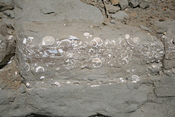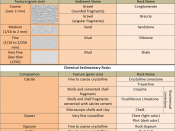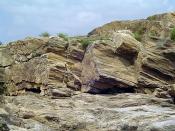Sedimentary Rocks 1
Sedimentary Rocks
Axia Collage University of Phoenix
Sedimentary Rocks
Where do sedimentary rocks originate? How are they formed?
"Sedimentary rock is one of the three main rock types (the others being igneous and metamorphic rock). Sedimentary rock is formed by deposition and consolidation of mineral and organic material and from precipitation of minerals from solution. The processes that form sedimentary rock occur at the surface of the Earth and within bodies of water. Rock formed from sediments covers 75-80% of the Earth's land area, and includes common types such as limestone, chalk, dolostone, sandstone, conglomerate, some types of breccia, and shale."
Deposition and consolidation of materials to form sedimentary rocks occur within bodies of water. Nothing I have read would suggest that the formation sedimentary rocks occur in any other environment. Robert L. Folk wrote "Study of sediments is being pursued intensely by oil companies, phosphate, uranium, and iron mining companies in order to locate new deposits and explain the origin of those already known."
This would suggest that the origins of sedimentary rocks are still a bit of a mystery. This causes me to pose the question; "if sedimentary rocks originated in bodies of water, are the natural resources that companies are looking for a part of the same process of disposition and consolidation?" Or are these resources covered by consolidation? Diamonds are created by heat and pressure. Is this not deposition and consolidation? By definition, is a diamond a sedimentary rock?
What are the three categories of sedimentary rocks?
Clastic
The classification of clastic sedimentary rocks is complex because there are many variables involved. Particle size (both the average size and range of sizes of the particles), composition of the particles, the cement, and the matrix (the name given to the smaller particles present in...


